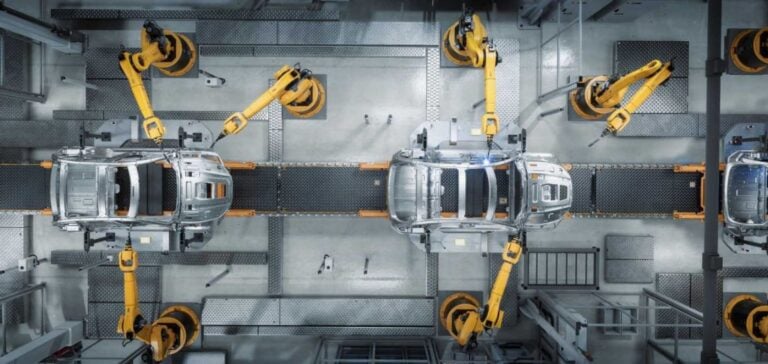The European Union has imposed strict standards to reduce CO2 emissions in the automotive industry. Starting in January 2025, manufacturers must achieve an average of 93.6 grams of CO2 per kilometer across their entire sales in Europe. This is a significant challenge for a sector that has already struggled to meet previous limits, despite notable efforts toward vehicle electrification.
European manufacturers, such as Renault and Volkswagen, are facing difficult choices. According to Josep Maria Recasens, Chief Operating Officer of Ampere (Renault’s electric subsidiary), if electric vehicle sales remain around 14% of total sales, the industry may be forced to drastically cut the production of combustion-engine vehicles, up to 2.5 million units annually, resulting in the closure of several plants across Europe.
Risk of Penalties and Alternative Strategies
In light of these new requirements, financial penalties threaten to become a major burden for manufacturers. According to estimates from consultancy firm Alix Partners, these penalties could reach up to 50 billion euros from 2025 to 2029 if manufacturers do not increase their sales of electric vehicles. One strategy among some groups is to purchase emission credits from less polluting manufacturers, such as Tesla or Volvo. However, for many executives, this solution is unsustainable in the long term, with some even describing it as a way of funding their competitors.
Another alternative for reducing emissions from combustion vehicles is to improve their environmental efficiency, for example by modifying transmissions or increasing the proportion of hybrid vehicles. Renault is banking on high-performing hybrid models and the upcoming release of new electric models, such as the R4 and R5, priced from 25,000 euros, to strengthen its presence in the electric segment.
Competition and Pressure from Chinese Manufacturers
At the same time, the rise of Chinese manufacturers adds pressure. Benefiting from lower production costs, these manufacturers are increasingly establishing themselves in the European market, despite tariff barriers. The slowdown in electric vehicle sales in Europe, observed since the end of 2023, could make it even harder for European manufacturers, who see their market share under threat. Brands like Volkswagen, whose electric sales have progressed more slowly than anticipated, have opted to lower the prices of their existing electric models, such as the ID.3 and ID.4, to stay competitive. Additionally, Volkswagen has already signaled the potential closure of three of its plants in Germany if targets are not met.
A Divergence Among Manufacturers on European Standards
The tightening of standards has created tension among major manufacturers. While Volkswagen and Renault have called for a review of CO2 targets from 2025, Stellantis, by contrast, opposes any modification. Stellantis Chief Financial Officer Doug Ostermann points out that the group has been preparing for this transition for a long time and is ready to claim its market share. Stellantis also plans to offer a broad range of hybrid and electric vehicles to cater to varying market demands.
For many manufacturers, the shift towards electric is inevitable, but the economic and industrial constraints are substantial. The transition to greener production involves significant investments and a major restructuring, with the goal of reaching the carbon neutrality objective set by the European Union for 2050. However, in a context of intensified competition and high production costs, meeting these standards without undermining profitability and competitiveness remains a major challenge.






















